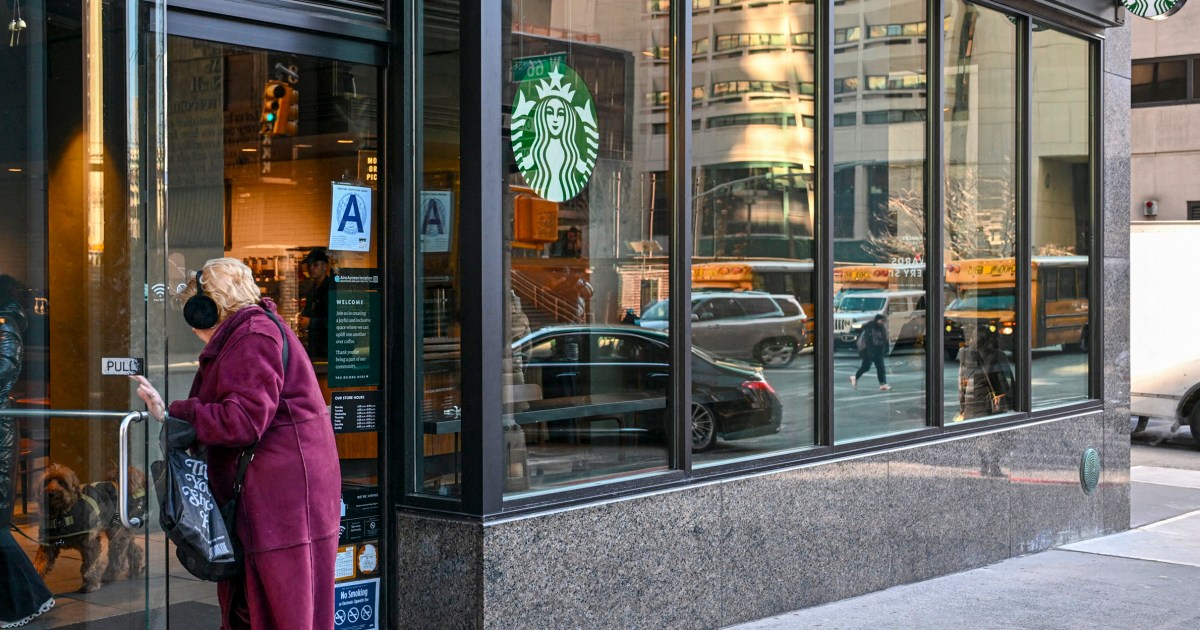Starbucks’ Controversial Buy-or-Leave Policy: An Insight into Its Impact on the ‘Third Space’ Legacy
Starbucks, the globally recognized coffeehouse chain, has long prided itself on fostering a unique environment often referred to as the “third space.” This term describes a welcoming atmosphere that exists between home and work where people can gather, socialize, and enjoy their favorite beverages. However, the recent implementation of a controversial buy-or-leave policy has sparked significant debate, raising questions about the future of this cherished community-centric identity. Is Starbucks risking its foundational ethos in the quest for profitability?
What is the Buy-or-Leave Policy?
In essence, Starbucks’ buy-or-leave policy stipulates that customers must make a purchase if they wish to stay and use the seating areas within their stores. This directive aims to address concerns about loitering and the use of store spaces by individuals who may not contribute to the business financially. While the intention behind the policy might be rooted in operational efficiency, its execution has led to heated discussions among customers, employees, and community advocates.
Understanding the ‘Third Space’ Concept
The notion of the “third space” emerged from sociologist Ray Oldenburg’s work, which highlighted the importance of informal public gathering places in fostering community engagement and social interaction. Starbucks has effectively positioned itself as a modern embodiment of this concept, providing a comfortable atmosphere where individuals can work, study, or simply enjoy a coffee with friends. This environment has contributed to the brand’s identity and success, making the buy-or-leave policy a potential threat to its long-standing legacy.
Community Response and Backlash
The introduction of the buy-or-leave policy has not gone unnoticed. Many loyal customers view it as a departure from the welcoming ethos that Starbucks has cultivated over the years. Feedback from social media platforms and community forums has revealed a mix of frustration, disappointment, and concern. Some common sentiments expressed include:
- Loss of Inclusivity: Critics argue that the policy disproportionately affects individuals who may not have the financial means to make frequent purchases, including students, the unemployed, and those experiencing homelessness.
- Corporate Greed: Many perceive the move as a profit-driven strategy that prioritizes revenue over community well-being, undermining the brand’s image as a socially responsible entity.
- Impact on Social Interaction: Customers fear that limiting access to seating may discourage casual gatherings, reducing the sense of community that Starbucks has fostered.
Analyzing the Business Perspective
From a business standpoint, addressing the challenges of overcrowding and the misuse of space is a legitimate concern. With the rise of remote work and digital nomadism, many Starbucks locations have become de facto offices for individuals seeking a change of scenery. While this trend has undoubtedly contributed to increased foot traffic, it also poses challenges in maintaining a balance between patrons who are there to socialize and those who occupy seats for extended periods without purchasing items.
Starbucks has often celebrated its cafés as safe havens for creativity and collaboration. However, the buy-or-leave policy may reflect a shift towards viewing these spaces purely as revenue-generating entities. This pivot raises the question: can Starbucks maintain its community-centric identity while also addressing its financial bottom line?
A Compromise for Community and Commerce
Instead of a stringent buy-or-leave policy, Starbucks could explore alternative strategies that balance community needs with business objectives. Some potential approaches might include:
- Time-Restricted Seating: Implementing a system where customers can reserve seating for a limited time could alleviate concerns about loitering while still allowing for social interaction.
- Community Events: Hosting local events, such as open mic nights or art shows, could encourage customer engagement without the need for excessive purchases.
- Discounted or Free Wi-Fi Access: Offering complimentary Wi-Fi for customers who make a purchase over a certain amount could incentivize spending while providing a welcoming atmosphere.
Looking Ahead: Preserving the Legacy
For Starbucks, the challenge lies in navigating the delicate balance between profitability and community engagement. As the company continues to evolve, it must remain mindful of its roots and the values that have endeared it to millions of customers worldwide. The buy-or-leave policy, while perhaps well-intentioned, risks alienating a segment of its patron base and could ultimately erode the sense of belonging that many have come to associate with the brand.
Conclusion: A Call for Dialogue
Starbucks’ controversial buy-or-leave policy raises vital questions about the future of its iconic ‘third space’ environment. As the company grapples with operational challenges and changing consumer behaviors, it is essential to engage in open dialogue with customers and communities. By fostering conversations about the importance of inclusivity, social interaction, and community support, Starbucks can work towards solutions that honor its legacy while adapting to the realities of modern business.
In summary, the ongoing discourse surrounding Starbucks’ policies underscores the significance of maintaining a balance between commerce and community. As the beloved coffeehouse chain navigates this complex landscape, its commitment to preserving the essence of the ‘third space’ will be crucial in defining its future and ensuring that it remains a cherished gathering place for all.
See more Business Focus Insider Team

